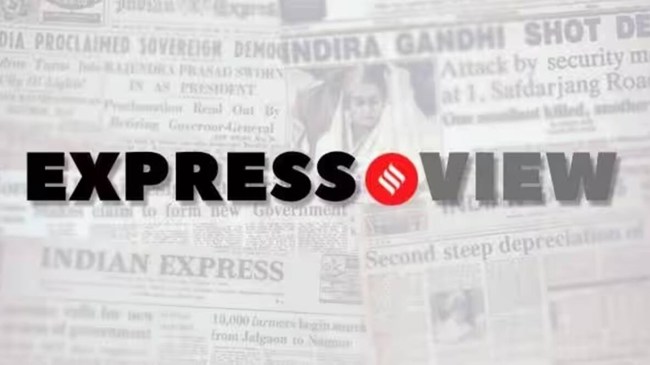Opinion SC must pause and examine unintended consequences of its ruling prescribing a timeline for the president
Setting a three-month timeline for the head of state to clear bills reserved for his/her consideration by the Governor is uncharted territory
 The SC ruling came in the fraught backdrop of constant tussles in Opposition-ruled states between the elected government and the centrally appointed Governor.
The SC ruling came in the fraught backdrop of constant tussles in Opposition-ruled states between the elected government and the centrally appointed Governor. Last week, in ruling that the Governor cannot stifle the democratic process of law-making by arbitrarily withholding assent to bills, the Supreme Court laid down some welcome guardrails. The ruling by a two-judge bench led by Justice J B Pardiwala sets timelines for the Governor to act in such cases. However, a reading of the 415-page ruling shows something that is troubling and problematic. The SC extended its scrutiny to the President’s role in the law-making process, setting a three-month timeline for the head of state to clear bills reserved for his/her consideration by the Governor. It did this by inviting states to knock on the Court’s door, seeking a writ of mandamus, or a directive against the President, if she does not decide within the prescribed time limit. This is uncharted territory. It has understandably raised alarm bells within the government and sparked apprehensions that the Court may be overstepping its boundaries.
The SC ruling came in the fraught backdrop of constant tussles in Opposition-ruled states between the elected government and the centrally appointed Governor. As the Court has noted, Tamil Nadu Governor R N Ravi has even “failed in showing due deference and respect to the judgments and directions of this Court”. Tamil Nadu moved the SC in 2023 when 12 bills had piled up before Ravi. When the first stricture came from the Court, he referred two of the bills to the President for her assent and returned 10. The SC sought the Attorney General’s assistance to resolve the issue, warning that it could set time limits if governors did not follow the law. When the 10 bills were passed again — Article 200 of the Constitution mandates the Governor to grant assent at this point — Ravi referred them to the President. This was a sleight of hand, to buy more time and duck liability since the issue would then be deemed to rest with the President. The Court notes, with concern, that two of the 12 bills in question were passed in 2020. “It is important to keep in mind that the tenure of the state legislature is of five years and the representatives are accountable to their electorate as regards the enactment of legislations addressing the issues faced by the electorate”. The SC’s timeline for the President apparently rests on this aspect, to close the loop that begins with the Governor and ends with the President. But involving the President raises questions over Article 361, which protects the office, and the constitutional contours of the separation of powers. By volunteering to rule on the constitutionality of a Bill under Article 143 — as distinct from an Act — the court pushes at the limits of this separation.
The Governor issue, at its core, is political. Unlike the US Supreme Court, which applies the doctrine of political thicket to refrain from venturing into issues that involve political questions, the SC is no stranger to such cases. It must examine the unintended consequences of its ruling. The Centre must act with grace, the office of the President must not be dragged into the to-and-fro between the government and the Opposition. The SC has a formidable tradition of wisdom and sobriety in upholding the separation of powers, maintaining a fine balance. It may need to revisit this aspect of its ruling.




